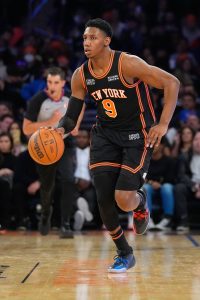Players and teams have to meet certain criteria to earn Bird rights and Early Bird rights, but Non-Bird rights are practically a given.
They apply to a player who has spent a single season or less with his team, as long as he finishes the season on an NBA roster and as long as he’s on a standard contract and not a hardship (10-day) deal. Even a player who signs a rest-of-season contract right before the regular season finale and spends just a single day with his club would have Non-Bird rights in the offseason.
Teams can also claim Non-Bird rights on Early Bird free agents if they renounce them. The primary motivator to do so would be to allow the team to sign the free agent to a one-year contract, a move that’s not permitted via Early Bird rights.
Teams are eligible to sign their own free agents using the Non-Bird exception for a salary starting at 120% of the player’s previous salary, 120% of the minimum salary, or the amount of a qualifying offer (if the player is a restricted free agent), whichever is greatest. Contracts can be for up to four years, with 5% annual raises.
The cap hold for a Non-Bird player is 120% of his previous salary, unless the previous salary was the minimum. In that case, the cap hold is equivalent to the two-year veteran’s minimum salary. If a Non-Bird free agent only has one year of NBA experience, his cap hold is equivalent to the one-year veteran’s minimum salary.
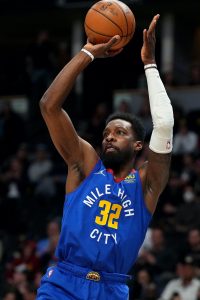 The salary limitations that apply to Non-Bird rights are more severe than those pertaining to Bird rights or Early Bird rights, so in many cases, the Non-Bird exception may not be enough to retain a well-regarded free agent. For instance, the Nets held Jeff Green‘s Non-Bird rights last summer, but couldn’t have used them to match or exceed the offer the veteran wing received from the Nuggets.
The salary limitations that apply to Non-Bird rights are more severe than those pertaining to Bird rights or Early Bird rights, so in many cases, the Non-Bird exception may not be enough to retain a well-regarded free agent. For instance, the Nets held Jeff Green‘s Non-Bird rights last summer, but couldn’t have used them to match or exceed the offer the veteran wing received from the Nuggets.
Because Green had been on a minimum-salary contract in 2020/21, Brooklyn’s ability to offer a raise using the Non-Bird exception was extremely limited — the Nets would have only been able to offer 120% of the veteran’s minimum using his Non-Bird rights, whereas the Nuggets’ two-year, $9MM offer easily topped that. If they’d badly wanted to retain Green, the over-the-cap Nets would have had to use another exception, such as the mid-level, to make a competitive offer.
The Lakers will be in a similar situation this offseason with Malik Monk, who will only have Non-Bird rights. If they want to retain Monk, the Lakers would have to use cap room (which almost certainly won’t be an option) or their mid-level exception to make their best offer, since they’ll be limited to a starting salary in the $2.5MM range via the Non-Bird exception.
Holding Non-Bird rights on a free agent didn’t really help the Nets with Green and it won’t help the Lakers with Monk, but there are cases in which the exception proves useful.
For instance, the Nuggets only had Non-Bird rights on JaMychal Green last offseason, but because his ’20/21 salary was $7,199,760, Denver was able to offer a starting salary worth any amount up to $8,639,712 (120% of his previous salary). That gave the club plenty of flexibility to re-sign Green without using cap room or another exception — he received a two-year, $16.4MM contract.
A deal completed by the Clippers last offseason provides an example of a team using Non-Bird rights on a minimum-salary player. Nicolas Batum, whose minimum salary would have been $2,641,691 in 2021/22, was eligible to sign for up to 120% of that amount via the Non-Bird exception. As such, his salary this season with Los Angeles was $3,170,029, the maximum he could’ve received using his Non-Bird rights.
Finally, it’s worth noting that a player who re-signs with his previous team on a one-year deal (or a two-year deal that includes a second-year option) and will have Early Bird or Bird rights at the end of that contract would surrender those rights if he consents to a trade. In that scenario, he’d only finish the season with Non-Bird rights.
This happened to Solomon Hill this year, when he agreed to a trade that sent him from Atlanta to New York. Hill would have had Early Bird rights if he had finished the season with the Hawks, but allowing the trade meant he would instead only have Non-Bird rights during the 2022 offseason. That wasn’t a concern for the Knicks, who forfeited their Non-Bird rights to Hill anyway by waiving the injured forward shortly after acquiring him.
Note: This is a Hoops Rumors Glossary entry. Our glossary posts will explain specific rules relating to trades, free agency, or other aspects of the NBA’s Collective Bargaining Agreement. Larry Coon’s Salary Cap FAQ was used in the creation of this post.
Earlier versions of this post were published in previous years by Luke Adams and Chuck Myron.
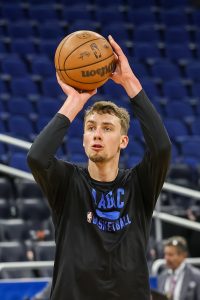 While No. 5 overall pick
While No. 5 overall pick 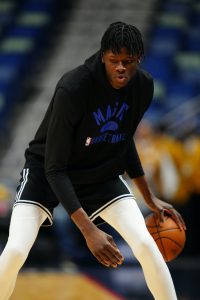
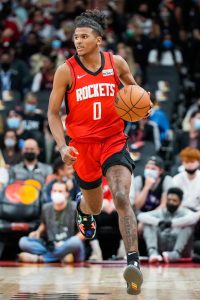 Ultimately, the end result in 2021/22 was the same as it was a year earlier — the Rockets won fewer than a quarter of their games and finished with the worst record in the NBA.
Ultimately, the end result in 2021/22 was the same as it was a year earlier — the Rockets won fewer than a quarter of their games and finished with the worst record in the NBA.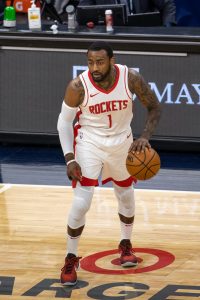
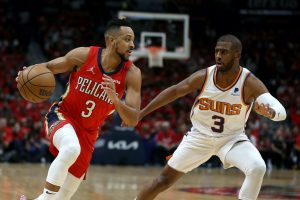 The early results in the Western Conference have provided another reminder of the unpredictable nature of this year’s postseason. The Suns and Grizzlies were the NBA’s two most dominant teams during the regular season, but they now found themselves tied up at 2-2 against a pair of play-in teams, the Pelicans and Timberwolves.
The early results in the Western Conference have provided another reminder of the unpredictable nature of this year’s postseason. The Suns and Grizzlies were the NBA’s two most dominant teams during the regular season, but they now found themselves tied up at 2-2 against a pair of play-in teams, the Pelicans and Timberwolves.  The salary limitations that apply to Non-Bird rights are more severe than those pertaining to Bird rights or Early Bird rights, so in many cases, the Non-Bird exception may not be enough to retain a well-regarded free agent. For instance, the Nets held
The salary limitations that apply to Non-Bird rights are more severe than those pertaining to Bird rights or Early Bird rights, so in many cases, the Non-Bird exception may not be enough to retain a well-regarded free agent. For instance, the Nets held 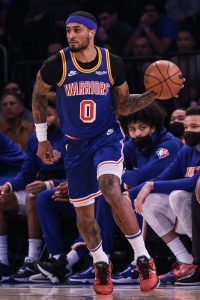 As is the case with Bird rights, a player’s clock stops when he’s released by a team and clears waivers, but it would pick up where it left off if he re-signs with that same team down the road without joining another club in the interim. For instance,
As is the case with Bird rights, a player’s clock stops when he’s released by a team and clears waivers, but it would pick up where it left off if he re-signs with that same team down the road without joining another club in the interim. For instance, 